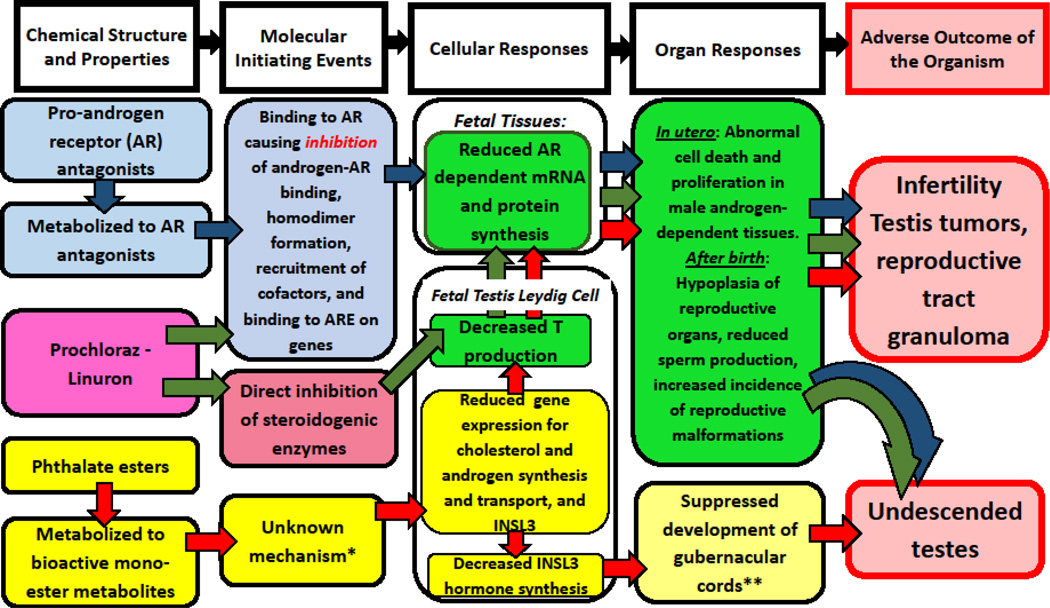Figure 1.
Adverse outcome pathway network for disrupted androgen- and insulin-like hormone 3 (Insl3)-dependent reproductive development in male rats. The first column of the AOP network identifies three classes of chemicals known to disrupt the androgen-signaling pathways via three different mechanisms of action. Different colored arrows indicate the pathway through which each set of chemicals exerts its affects: blue arrows, androgen receptor (AR) antagonists; green arrows, dual mechanism of action chemicals (AR agonists antagonists and steroid enzyme inhibitors; and red arrows, phthalates (molecular initiating event unknown, but known to inhibit fetal testosterone (T) production. *Reproductive toxicant effects of phthalates are not mediated via the AR or the peroxisome proliferator activated receptor alpha (PPARα). **INSL3 hormone is required for maturation of the gubernacular cords, which leads to transabdominal descent of the testes (the first phase of testes descent).

